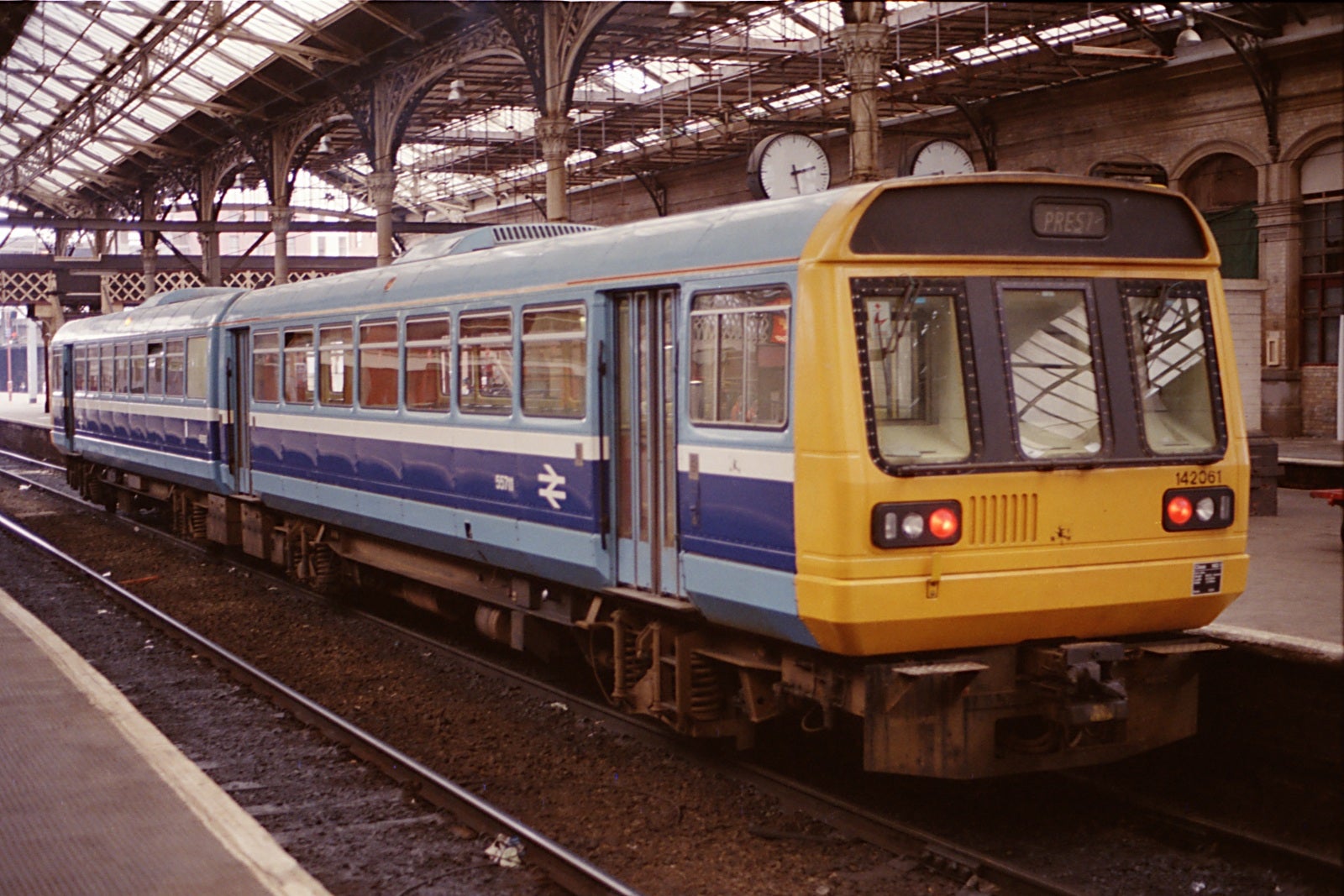 "Cé hé sin" (michael-m-mouse)
"Cé hé sin" (michael-m-mouse)
10/27/2016 at 18:03 • Filed to: Class 142, Leyland, SCG, Trainlopnik
 3
3
 4
4
 "Cé hé sin" (michael-m-mouse)
"Cé hé sin" (michael-m-mouse)
10/27/2016 at 18:03 • Filed to: Class 142, Leyland, SCG, Trainlopnik |  3 3
|  4 4 |
In a train.
Trains, especially relatively modern ones, are not vehicles usually associated with manual gearchanges.
Here’s one that was. It’s a Class 142 multiple unit as found on commuter lines around Britain.
 !!!CAPTION ERROR: MAY BE MULTI-LINE OR CONTAIN LINK!!!
!!!CAPTION ERROR: MAY BE MULTI-LINE OR CONTAIN LINK!!!
In the 1980s British Rail found themselves possessed of a need for light commuter trains and simultaneously not possessed of very much money. They therefore decided on a cheap alternative to a traditionally built train and turned to British Leyland, makers of many of the buses used in the UK at the time. Between them they came up with the idea of using what was essentially a bus body fitted to a chassis suitable for rail use. In keeping with the bus origins, the 142 doesn’t use the normal articulated bogies that you find on a train but instead has two fixed axles. Being fixed they don’t follow curved rails properly and you get a noisy and uncomfortable ride and unhappy passengers.
Being bus based BL decided to use their usual Leyland engines and SCG gearboxes. SCG stands for Self Changing Gears but they weren’t. The SCG box was a semi automatic with a torque converter for starting and a hydraulically operated manual gearchange. You got a gearlever then and should you ever find yourself at the controls of any Class 142s (or the various similar ones) that haven’t been converted to a more conventional train transmission you’ll need some driving instructions.
The internet has you covered. Thanks to some anonymous poster on a rail forum you can learn.
Here we go:
“While still stationary
at the starting station, open the throttle with
the gears in
neutral, and rev the engines for a few minutes to ensure
all power
cars have plenty of control air. That almost certainly wasn’t
in
the spec, but by the 80s it was necessary and a 6 (or even better,
9)
car Class 126 set standing in Platform 12 of Glasgow Central
with all
engines roaring at maximum thrash was a truly spectacular
sight and
sound.
Guard blows whistle and gives you two
buzzes. Close throttle, let revs
drop, swing vacuum brake handle
to “full release”. Vacuum starts to
build, brakes begin
to release. Move direction selector level (IIRC aka
“the
spoon”) to “Forward”.
Revs now down to idling,
move gear lever into 1st, wait five seconds to
ensure all
gearboxes engaged. Noticeable “clunk” from below
unit.
Open throttle. Engine revs start to rise, unit begins to
pull away as
brake continues to release. Give two buzzes back to
the guard.
Open throttle all the way, enjoy the rising sound
of the final drive on
the leading bogie beneath you as you start
to pick up speed.
Watch the rev counter (if necessary, switch
it back and forth between
No1 and No2 engines, if there’s a low
reading on one). When it gets to
maximum revs, close the
throttle.
Wait for engine revs to drop to minimum, change into
2nd gear. Wait
five seconds. Open throttle.
Repeat watching
rev counter and changing up through 3rd and 4th gear,
once in 4th
the unit will (eventually) accelerate to 70mph.
Eventually,
when approaching the next station, shut off power, let revs
drop,
knock the transmission back to neutral. Then slow the unit down
using
the vacuum brake in the traditional manner, remembering that
vacuum
braked units can do partial-release, so braking is reasonably
easy
to control.”
So there you have it. Easy when you know how.
 facw
> Cé hé sin
facw
> Cé hé sin
10/27/2016 at 19:48 |
|
Not having bogies seems like a bad idea, but it does seem like even now (well not now, I haven’t been since 2012) in the UK you do see rolling stock with just the two axles. Granted I’m also pretty sure those were all freight cars, which presumably don’t care so much about rough rides.
 Mondial goes to 11
> Cé hé sin
Mondial goes to 11
> Cé hé sin
10/27/2016 at 19:54 |
|
I’m really enjoying all these locomotive transmission articles.
 Stephenson Valve Gear
> Cé hé sin
Stephenson Valve Gear
> Cé hé sin
10/27/2016 at 20:25 |
|
Great write-up, very interesting units. The remark about the partial release on vacuum brakes made my ears perk up, since traditional train air brakes (at least on American freight trains) cannot be partially released once set. An additional air reduction may be made to increase braking force, but if less braking is desired, it is necessary to fully release the brakes, then reapply. This is why you often see steam locomotives chuffing all the way up to a stop... as the train slows down, the coefficient of friction increases, which will make the train come to an abrupt stop UNLESS 1) the brakes are capable of a partial release to lessen the braking force at low speeds, or 2) power is applied to counteract the increased braking force at lower speeds... add throttle as the train slows down so it doesn’t jerk to a stop, chuff, chuff, chuff!
 Cé hé sin
> facw
Cé hé sin
> facw
10/28/2016 at 09:55 |
|
They’re still in use. The Class 142 which I pictured is to be found on several lines and there are a couple of other classes too. They’ll be in service for another couple of years until electrification (which will release more modern rolling stock), accessibility and safety requirements catch up with them.